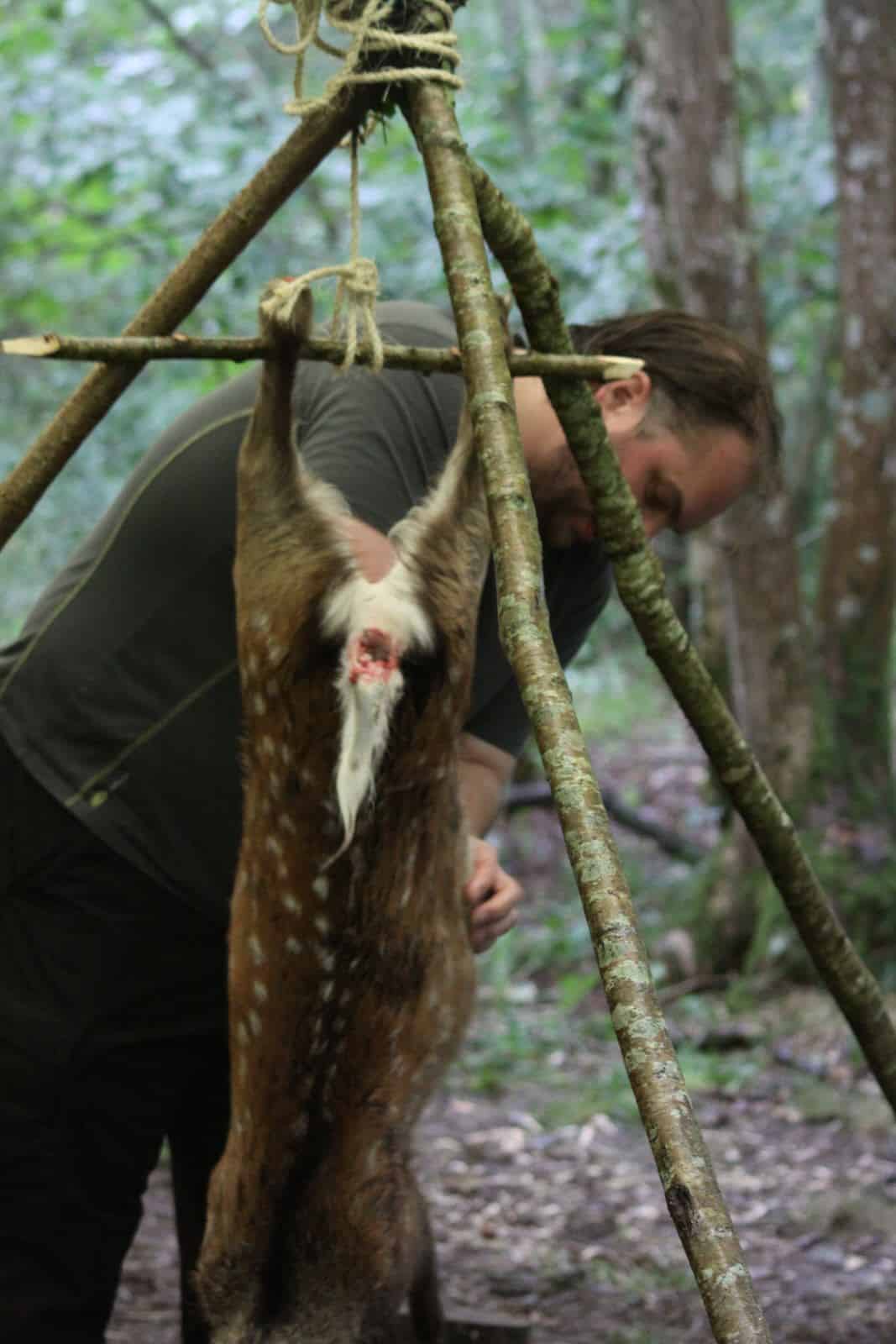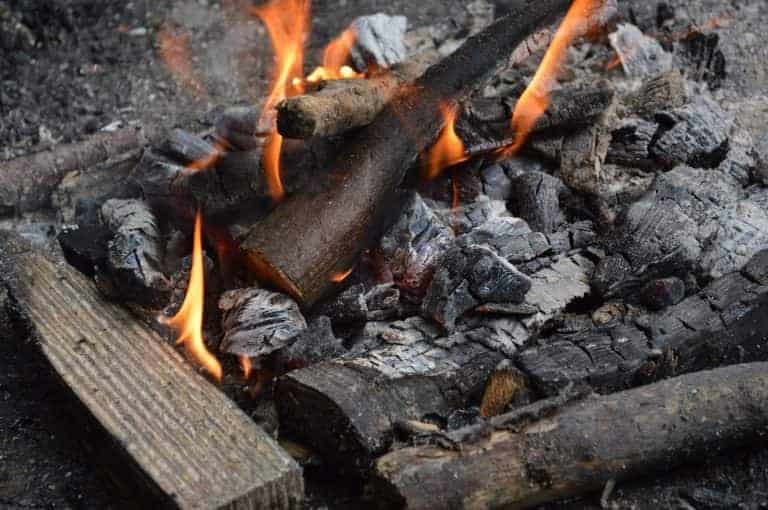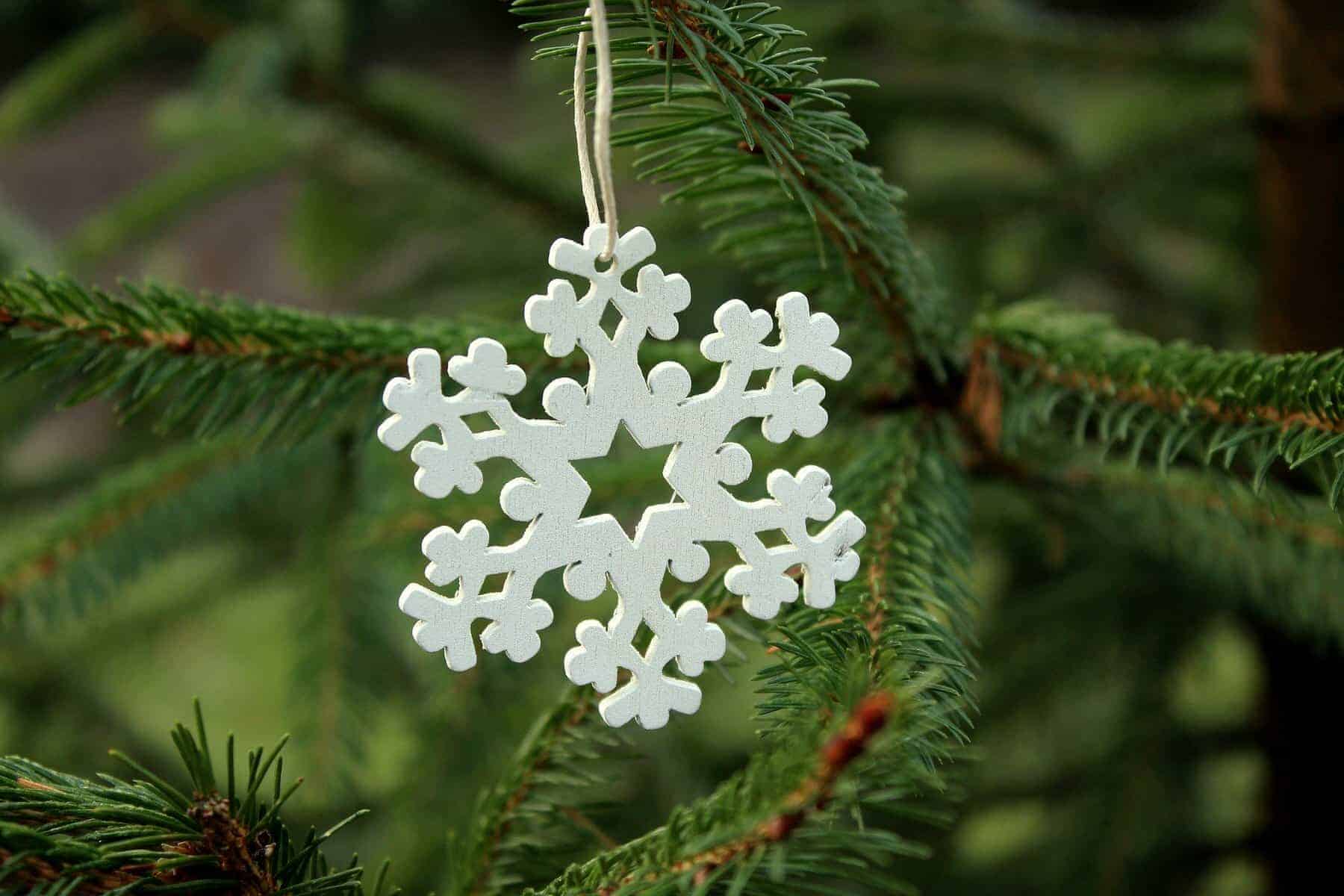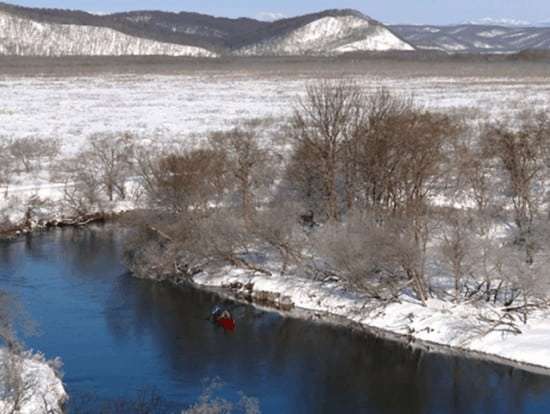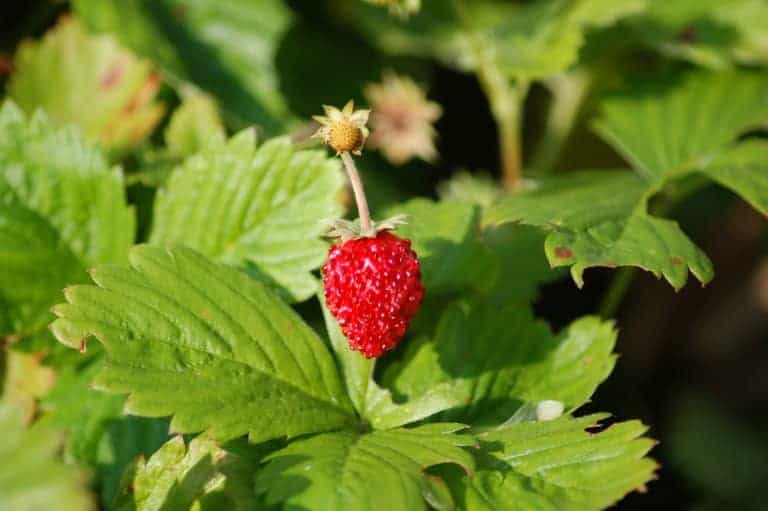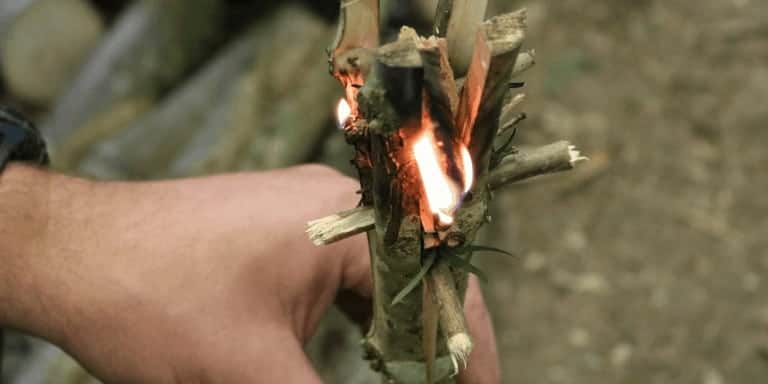Making Primitive Glues
Glue making has a long and rich history, possibly dating back to the Neolithic period and beyond. Not only was it used in weaponry, fastening arrowheads to arrows and the like, but there is also evidence that it was used to repair broken pottery. In this blog post, we will look at two types of primitive glues, hide glue and resin glue. As always, please feel free to read the whole blog or just click on the section that interests you the most.
Remember, the only way to truly learn these techniques is to practice them in a real-world situation. Join our intermediate bushcraft course to learn more about these techniques.
Making hide glue
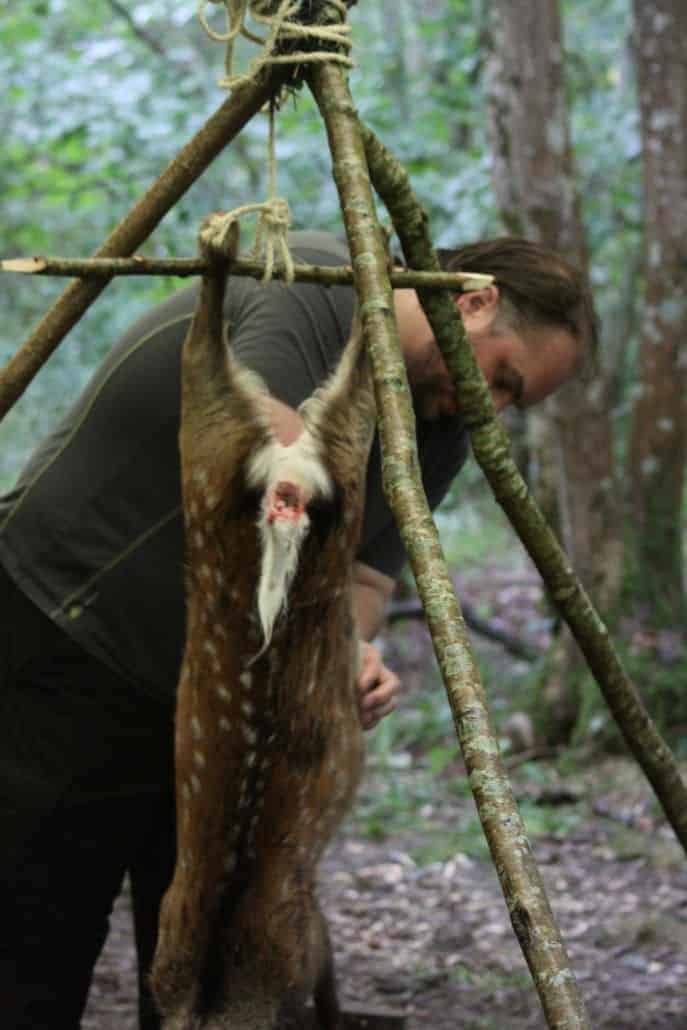
This section will give you a brief overview of the what, why and how behind hide glue. At its essence hide glue is made from extracting collagen from the hide, bones, sinew, etc. of an animal. It has been used throughout the years in everything from hunting bows to furniture and has even been found in Egyptian caskets.
Advance your bushcraft
Softening up the rawhide
The hide needs to be softened first. The method of doing this depends on where you are sourcing the hide from. The best method of doing this is to cut the hide, if you’re taking the glue from the hide, into small pieces, put it into a pot and cover it with water. The water should be allowed to reach a gentle simmer, not a rolling boil, and allow it to remain simmering until the hide becomes semi-transparent. This can take up to several hours so be patient.
Remove the pieces of hide
Use a strainer or the like to remove the pieces of hide from the substance. Leaving the liquid in the pan, strain out the big bits of the hide using a sieve or the like, then strain the liquid through a finer mesh, such as a cheesecloth, in order to remove the finer particle.
Cool the liquid
Allow the liquid to cool naturally. You will be left with a congealed, rubbery substance. This can then be broken up into small pieces and put aside to dry. These crumbled up bits can then be stored away somewhere waterproof and relatively airtight.
Using your glue
When you need to use your glue, take out as many of the small crumbled up bits as you think that you need and warm them slowly using as little water as possible. The more water that you add the thinner, and therefore weaker, the glue will be.
Advance your bushcraft
Making pine resin glue
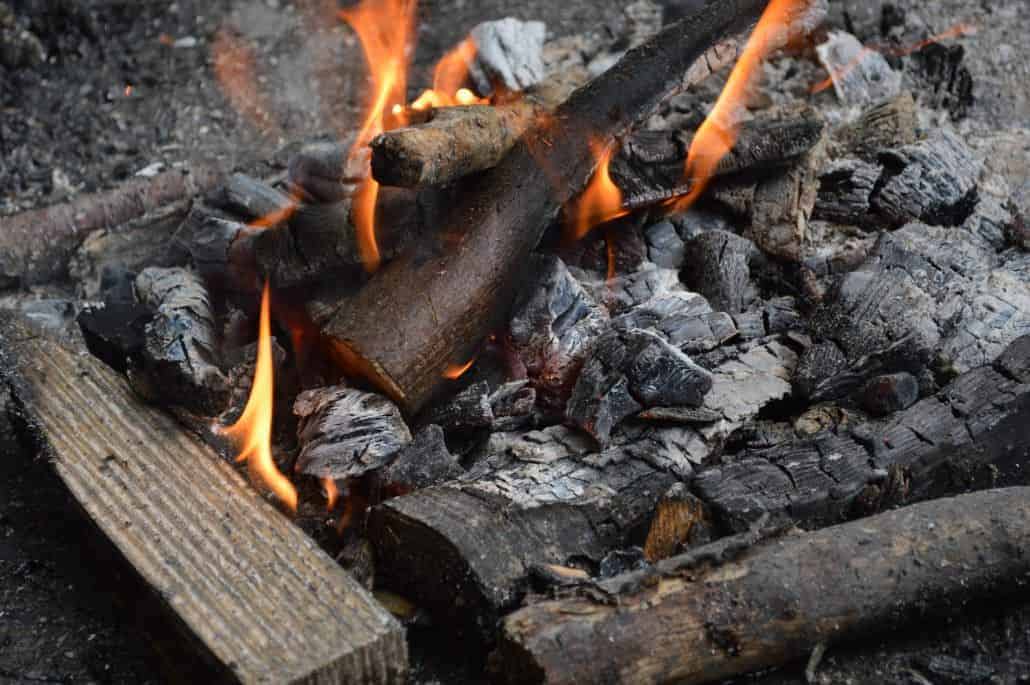
Pine resin glue is, arguably, somewhat easier to make. It relies on using the pitch, or resin, that is excluded by some trees in order to help heal cuts in their bark.
Gathering the pine resin
As mentioned above, pine trees secrete resin in order to close cuts in their bark, and in doing so, reduce the risk of the tree becoming infected. Remember, treat the trees with respect and do not do anything which could damage them. The pine resin that is needed for glue can either be collected from dried, previously secreted, resin or from fresh running resin. If you’re collecting the hard resin, simply lever it off the tree using your knife. If collecting fresh, running resin, take it from trees that have been naturally grazed.
Prepare the pine resin
The pine resin should be prepared before use. In order to do this, heat the pine resin on a stone next to your fire and mix in some fine ash powder from the fire.
Using your pine resin
When it comes to using your pine resin glue it should be remembered that it dries very quickly. This means that the item that you’re intending to glue should be ready to receive the pine resin before you come to use the glue. In order to use the glue, simply heat up the ash and pine resin mix and then apply it to what you are hoping to glue and then let it cool.
Advance your bushcraft
Kit
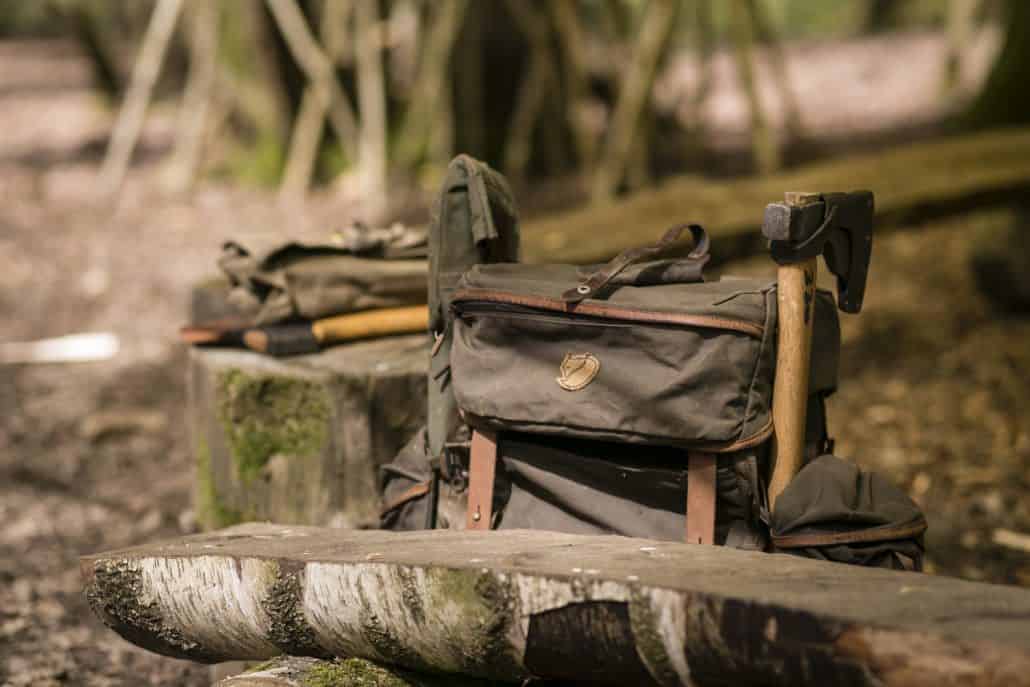
There are a few key pieces of kit that you will need for making primitive glues. These are outlined below, remember though, you need to choose the kit that suits your purposes and abilities.
- Fallkniven DC4
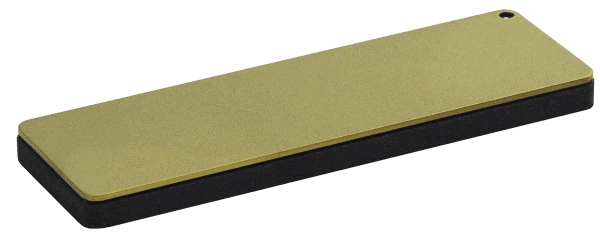
This diamond/ceramic whetstone is perfect for use in the field.
https://www.fallkniven.com/en/knife/dc4/ - Knives
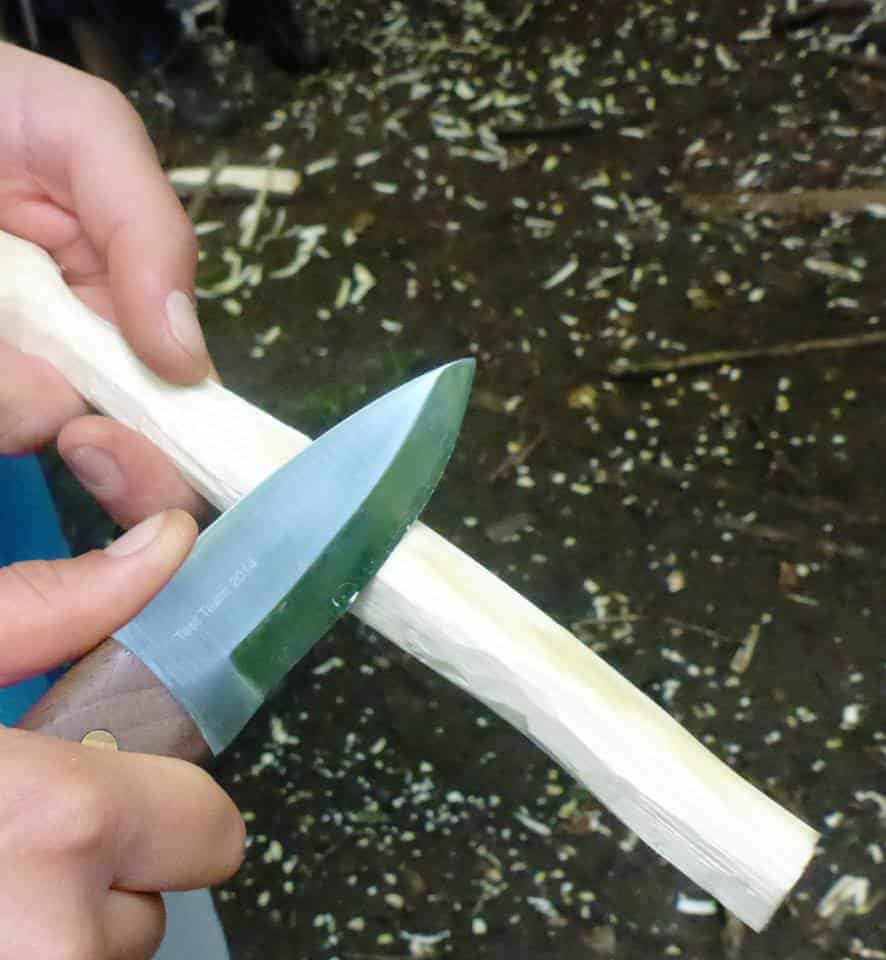
Wildway Bushcraft uses Bear Blades.
“Constructed from superb quality D2 steel this knife is ideal for bushcraft and wood crafting. Our most popular knife due to its versatility and functionality, suited to tough daily use in the woods.”
http://bearblades.co.uk/

